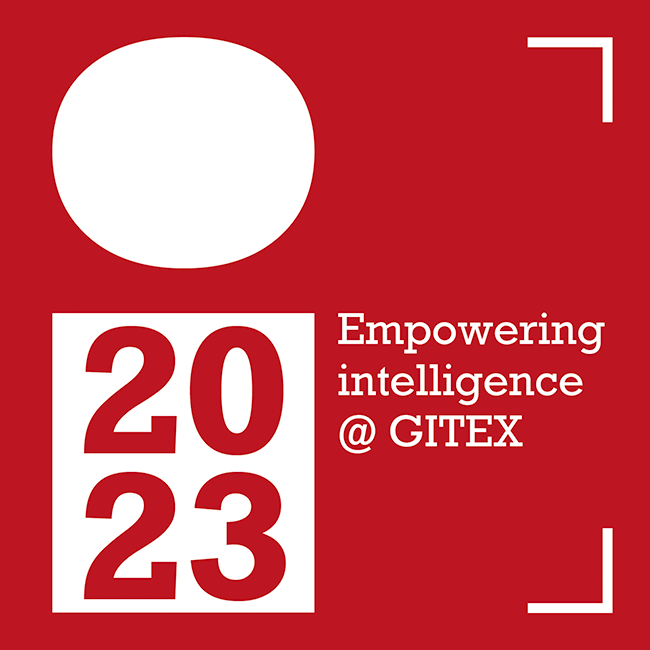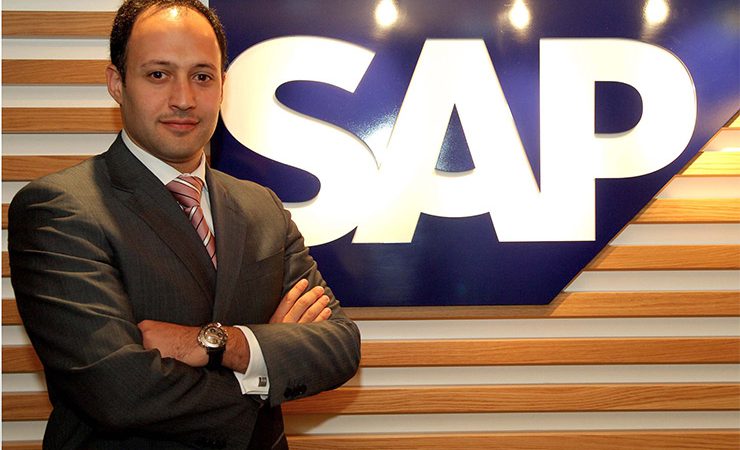Gergi Abboud, Managing Director, Gulf, NAL and Pakistan, SAP
Q: What is the focus of SAP’s participation in GITEX this year?
A: We are operating on the theme of ‘Empathy to Action’. All the demos we’ve got are based on the customer experience, not our customer but the customer of our customer. Which is key. Because if you look at the last four or five years of building up on the digital transformation, a lot of people were trying to figure out what to do with big data, what to do with IoT.
And I think everybody’s coming to the conclusion that these things have to merge together to serve the unique experience for the customer. And that’s the beauty of what I believe is the theme we’re running now because it’s empathy to action. It’s basically looking at the real needs of a customer rather than what would look good from a digital transformation standpoint.
The story of digital transformation today is amazing because we’re allowed to innovate with every interaction we have. Every customer has their own needs and there is no copy and paste on digital transformation.
We can give them the right processes. But every one of them wants to innovate something different based on the data they’re collecting, whether from the IoT, analytics, social media, and innovating a new experience that they want to deliver to their own customer in the context of the local market, which is also important. Because, for example, a smart city in Dubai fits the standard terminology of a smart city because it’s all built on a 21st-century city where the infrastructure as ready. We have that discussion in other countries, such as Pakistan, Egypt, and they’re going to struggle with the concept of smart cities. But the underlying technologies are still the same. The question is what are we trying to resolve in the context of that market?
If you look at Karachi, they love the idea of smart cities and safe cities, so this is the need. Now, the same technology that is being used in Dubai can’t be used there to enable this, but the way you position it and the context of that market becomes a very unique message. Something that’s needed to the local requirement of that population.
We have all the solutions to collect the data, but then turning this into an action that’s based on the right empathy within the context is what you need.
Q: What about new solutions being launched this week?
A: We’re demoing some key innovations coming out of the region and these are solutions that are in collaboration with our customers. These are all based on our underlying platform which is SAP Leonardo.
SAP Leonardo is a platform launched in April this year that accumulates all the latest technologies from blockchain, IoT, big data, all combined into one platform to allow clients to leverage these latest tools, and put them together in action to resolve business challenges or to bring visions into reality.
Q: What do you currently identify as the trends within your industry?
A: There is a trend that’s backed up by research that we have launched and it’s not about the adoption of technology, it’s the adoption from a mindset point of view, that digital transformation is a need, not a good to have or a gimmick on the side.
There is no need to convince them anymore that the digital transformation is needed. They’re all convinced and it’s backed up by a survey that we just launched today that we did with Oxford Research. The research was an analysis of over 3,000 customers across 17 countries, and 84% of these leaders responded saying that digital transformation is a must.
However, there’s a gap. In the report, only 3% realised this digital transformation today. Saudi Arabia and Egypt were part of that analysis, and it’s interesting to look at why they’re not onboarding into that journey and it reconfirms my discussions with all of these leaders. They don’t know how to approach it, because digital transformation is such a broad statement and even when you look at the underlying technology, it’s even broader. So when you say IoT, the word itself is so vague. It’s not quantified in my opinion as a technology.
And even blockchain, it’s a distributed trust system over the Internet just to create trust in interactions. So none of these alone, without the proper use case, would make sense especially to a non-IT person, a business owner, or the CEO, but they all understand. They can see examples and this is how they’re building their analysis. If I don’t get on board, I’m going to be disrupted by somebody else from a different continent using such technology, addressing my own customers. But I can address these customers in a context of the local market using the same technology and potentially tap into new markets using this technology.
As a trend, we are at the verge of a massive scale of adoption of digital transformation. However, we see a lot of people that are trying to figure out how to do this with minimum destruction to current business, and at the cost that makes sense with a proper ROI.
So there’s a lot of hesitation. However, as part of the study, four key characteristics have been seen as a trend across the 3% that made it successfully to digital transformation.
The first one is readiness to adopt and change, because it doesn’t make sense to go and adopt digital transformation and replicate exactly how you used to do the old way of doing things. A lot of people are trying to keep the same processes in their organisation, and talk to their customers by adding a digital layer on top of that. It doesn’t make sense because it’s actually becomes unnatural for customers to engage. So readiness to change is very important and when I say that, it’s readiness to change not only in the technology layer, but in the way the operation runs as an organisation.
The second point is focus on the customer and that’s very key. Digital transformation for the beauty of doing it doesn’t make sense for them. You need to start with your customer, build the experience that you think they want, and then reverse engineering, then see all the digital tools that you need to be able to deliver on that experience consistently at the personalised level, so you can scale.
The third one is talent. You need to have the right talent but there’s an interesting fact in the analysis, it’s a self-feeding loop. You adopt digital transformation, top talent wants to join, especially in a today’s market where you really have a lot of millennials. They don’t want to work in the company that gives them the tools that are native. It’s self-fulfilling because the more you adopt digital transformation, the more you can attract talent and retain talent that you want to keep for your next phase as a business and your journey in the region.
The fourth one is to invest ahead of the curve. A lot of people have heard about blockchain now, but blockchain has been there for more than 10 years. When bitcoin started in 2010, it’s based on the blockchain and it was the first real-life application now on a blockchain but it took us time to figure out as a business community and IT community.
All the companies that took a leap of faith ahead of the curve are benefiting from digital transformation. It doesn’t make sense to do digital transformation with old tools. I think it’s feasible but it’s going to cost you triple the money and most probably that will make your life unbearable in the near future.
Q: The figure of successful digital transformation is so low at the minute, do you see that growing quite quickly now?
A: Yes. I would say in the last six months there have been a lot of serious discussions, not just at the CIO level but at the owner level, where they are very keen on building a digital agenda across the organisation.
The interest is massive. At GITEX this year we are seeing many customers who six months ago we started building their digital transformation plan. We do have a lot of new faces but a lot of the meetings are continuation of that journey that began in the start of the year.
I was asked an interesting question today which was, is the economy a roadblock? I think it’s actually acting as a catalyst. These people who have been contemplating digital transformation, who are thinking of that as an opportunity to reach more customers, new channels, better experiences, increase the opportunity of running their business more efficiently, are now pressing the execution button under pressure because they need to move on. Otherwise, their own way of doing business is going to keep them under a lot of strain in any economically challenging region.
Q: What were the top priorities identified for CIO’s digital investment in SAP and Oxford Economics’ latest report? And how have these changed in the last year?
A: According to the study, by 2018, three-quarters of leaders will be mainly investing in big data, analytics, and IoT. If you combine these three, big data used to be based on your structure, your data, or some social media, and the way you understood it. Now, with the ability in combining IoT to it, you’re pulling the data from the things. You’re connecting the things to the humans, to your processes, and then using analytics to turn any trend or view into an action. This is why I think even from a logical point of view, what these three-quarters of the leaders are saying makes a lot of sense.

